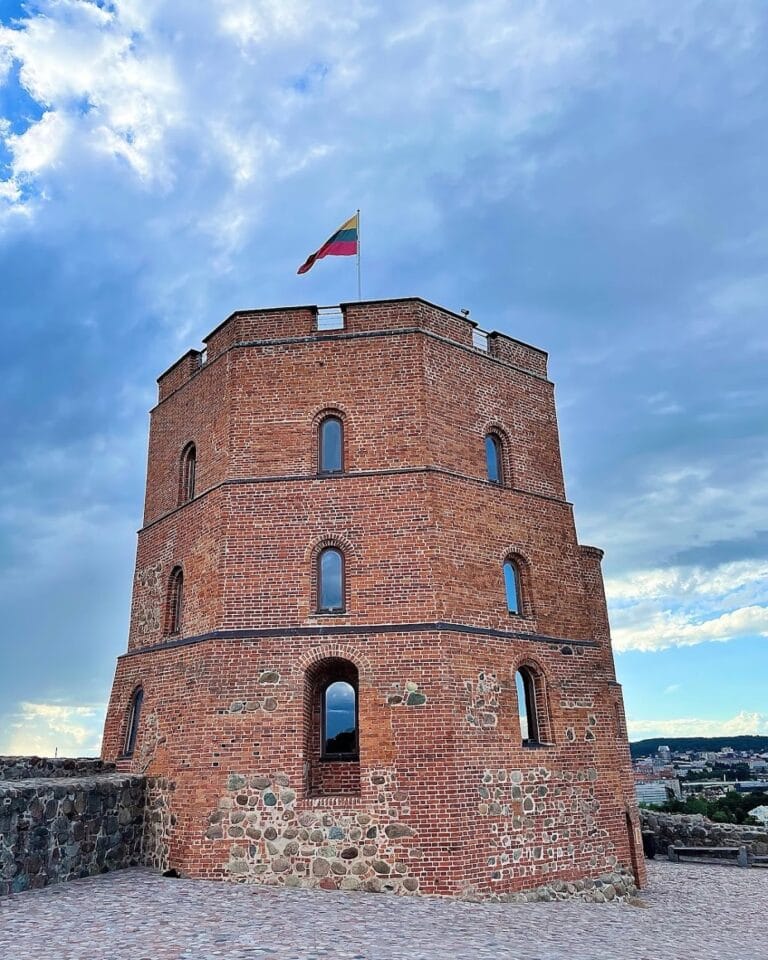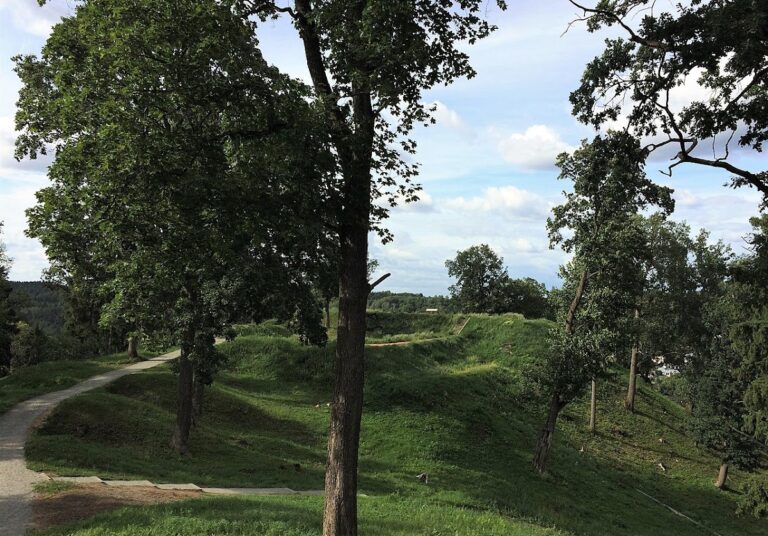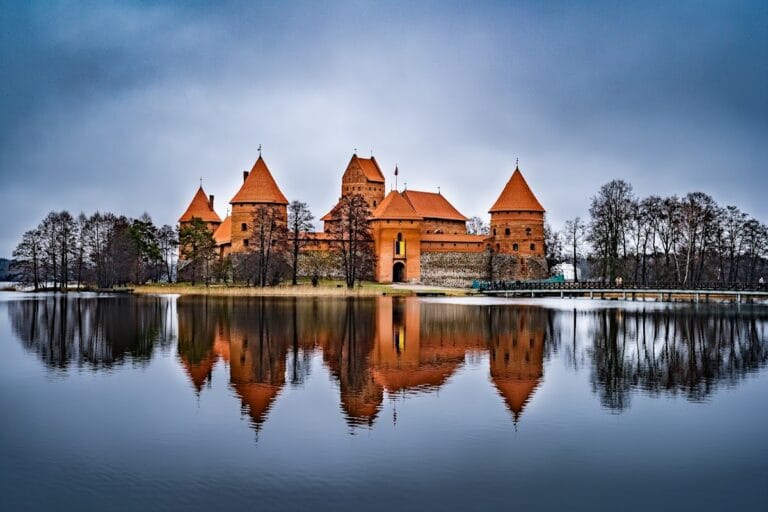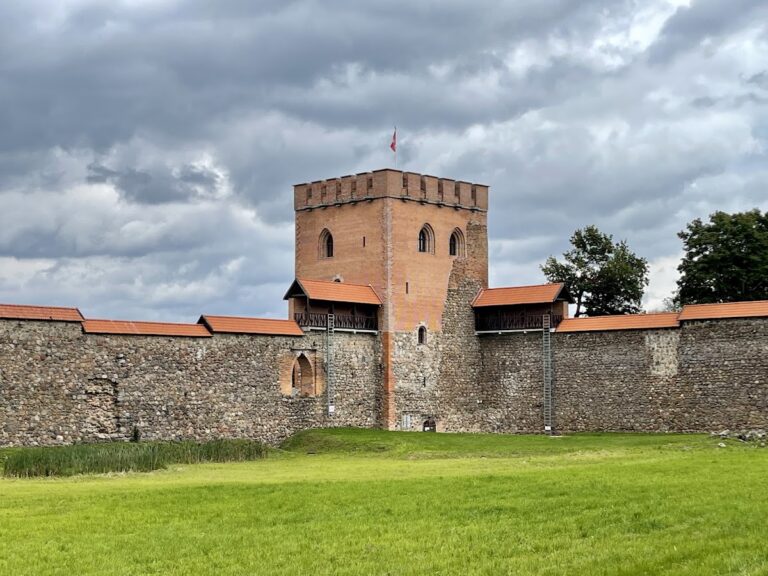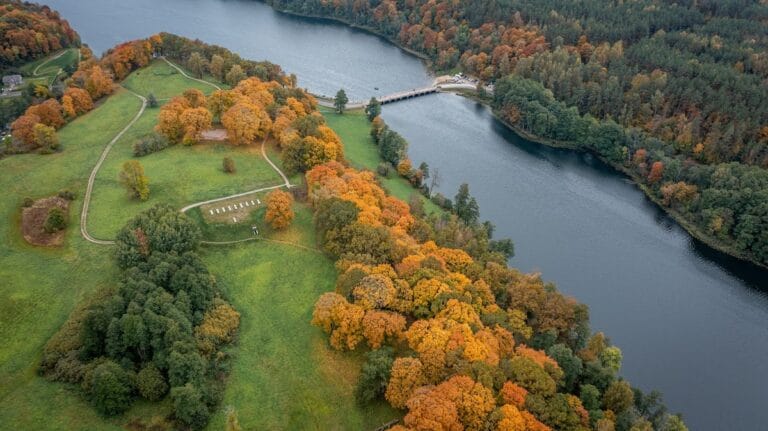Vilnius Castle Complex: A Historic Lithuanian Stronghold and Cultural Center
Visitor Information
Google Rating: 4.5
Popularity: Very Low
Google Maps: View on Google Maps
Country: Lithuania
Civilization: Unclassified
Remains: Military
History
The Vilnius Castle Complex is situated on the left bank of the Neris River near where it meets the Vilnia River, within the municipality of Vilnius, Lithuania. This defensive site was developed by the Lithuanian people from the 10th century through to the 18th century, serving as a key stronghold and political center across many centuries.
The earliest phase of the complex began in the 9th century on Gediminas Hill, an oval plateau occupied since the Neolithic era. Initially fortified with wooden walls that were eventually reinforced with stone, this site formed the core of what would become the Upper Castle. Under Grand Duke Gediminas in the early 14th century, Vilnius was established as the capital, and the castle underwent significant expansion and improvements, particularly following a destructive fire in 1419. This period saw the Upper Castle rebuilt in Gothic style, with distinctive green-glazed roof tiles and a large donjon hall. Though plans existed to crown Vytautas the Great as king there, his untimely death prevented this event. After the 16th century, the Upper Castle’s upkeep declined; it served as a noble prison before being last used militarily during the 1655 invasion by Russian forces, who captured Vilnius during the Battle of Vilnius. Polish-Lithuanian troops reclaimed the site in 1661, but it was subsequently abandoned.
Alongside the Upper Castle was the Lower Castle, an area inhabited since the Neolithic that evolved from wooden settlements to a complex of stone defensive walls, towers, and gates by the 13th and 14th centuries. The Lower Castle housed the Royal Palace and Vilnius Cathedral. The Royal Palace, initially constructed in the 15th century after the same 1419 fire that affected the Upper Castle, grew over time into a political and cultural hub for the Grand Duchy of Lithuania, particularly thriving in the 16th and mid-17th centuries. Grand Duke Alexander Jagiellon moved his residence here and initiated renovations, while Sigismund I the Old expanded the palace, adding new wings, extra floors, and expansive gardens. Renaissance-style remodeling was undertaken in the 16th century by Italian architects, with further early Baroque transformations during Sigismund III Vasa’s reign. The palace was the venue for notable events such as royal weddings and the first Lithuanian opera in 1634. However, it suffered severe damage during the Russian invasion in 1655 and was abandoned for nearly 150 years. After the Polish-Lithuanian Commonwealth dissolved, parts of the palace ruins were inhabited before Russian authorities ordered its demolition in the early 19th century.
Adjacent to the Royal Palace stands the Vilnius Cathedral, a site layered with religious significance and transformation. Originally a pagan worship place dedicated to the god Perkūnas, it was first turned into a Christian cathedral by King Mindaugas in 1251. Following Mindaugas’s death, the cathedral reverted to pagan use. It was rebuilt in Gothic style in 1387 when Lithuania officially adopted Christianity. After a destructive fire in 1419, Vytautas oversaw the construction of a larger Gothic cathedral on the site. During the 16th and 17th centuries, the cathedral was rebuilt and expanded multiple times, acquiring Renaissance and then neoclassical features, culminating in an 1783 redesign by architect Laurynas Gucevičius. Its 15th-century bell tower was constructed atop a former defensive tower of the Lower Castle. The cathedral also holds the tombs of important figures such as Vytautas the Great, his brother Sigismund, cousin Švitrigaila, Saint Casimir, Alexander Jagiellon, and two spouses of Sigismund II Augustus.
The castle complex also contained two arsenals serving military and administrative roles. The Old Arsenal was founded under Vytautas in the 15th century and expanded through the 16th and early 17th centuries. It housed around 180 heavy cannons by the mid-1600s. The New Arsenal, created in the 18th century by Grand Hetman Kazimierz Ogiński in one of the site’s oldest buildings, was integrated into the castle’s defensive walls and once had a tower aiding river navigation. Both arsenals sustained damage during World War II but were partially restored under later stewardship.
Throughout medieval times and into the early modern period, the Vilnius Castle Complex faced numerous attacks by the Teutonic Order from 1365 to 1402; although it was assaulted repeatedly, the complex was never fully conquered by the knights. The first complete occupation occurred under Russian forces during the 1655 Battle of Vilnius. Following this siege, many castle buildings were heavily damaged and gradually lost military and political importance. The subsequent Russian imperial period brought demolition of historic structures and changes linked to fortress construction efforts during the 19th century.
The surviving western tower of the Upper Castle, known as Gediminas Tower, remains an enduring symbol for Vilnius and Lithuania. Since the tower’s first hoisting of the Lithuanian tricolor flag on January 1, 1919, it has stood as a marker of Lithuanian statehood and aspirations for independence. The tower is part of the National Museum of Lithuania and houses exhibits relating to the castle complex’s history and national heritage.
Remains
The Vilnius Castle Complex occupies a strategic location on an oval plateau, Gediminas Hill, rising 40 to 48 meters above the surrounding land and stretching approximately 160 meters in length. The original fortifications began as wooden walls in the 9th century, later strengthened with stone from the 13th century onward. The Upper Castle featured stone walls with towers, rebuilt in Gothic style by 1422. The donjon tower contained a spacious main hall measuring 10 by 30 meters, which was the largest in the entire complex. Its roof was distinctively covered with green glazed tiles. Today, the extant remains of the Upper Castle consist primarily of the western tower, known as Gediminas Tower, along with fragments of the donjon and other tower bases. Gediminas Tower includes a viewing platform and has been made accessible by a modern elevator installed in 2003, which rises about 70 meters in half a minute. Inside, visitors find historical displays including photographs, models of medieval Vilnius, and artifacts such as authentic weapons used between the 13th and 18th centuries, along with flags associated with Vytautas’s army.
The Lower Castle’s defenses, constructed mainly during the 13th and 14th centuries, replaced earlier wooden fortifications with stone walls, gates, and towers. Unlike the Upper Castle, the Lower Castle’s buildings survive largely intact. This area contains the Royal Palace and Vilnius Cathedral. The Royal Palace was originally built in the 15th century following the 1419 fire, designed in a Gothic style featuring three wings, likely two stories tall plus a basement. Over the 16th and 17th centuries, the palace was expanded and remodeled in Renaissance and early Baroque styles under the guidance of Italian architects, including Bartolomeo Berecci, Giovanni Cini da Siena, and Bernardino de Gianotis Zanobi. Its grounds included extensive gardens, which were considered valuable assets during Sigismund I’s reign. After damage from the 1655 Russian invasion and later neglect, portions of the palace were demolished in the early 19th century, with bricks sold off in 1799. Today, only ruins remain at the site.
The Vilnius Cathedral exhibits an architectural history shaped by multiple reconstructions. Its current neoclassical appearance dates from an 1783 redesign by Laurynas Gucevičius. The bell tower, built during the 15th century on the site of a former Lower Castle defensive tower, was first documented in 1522. Between 1786 and 1792, the rooftop was adorned with sculptures representing Saint Casimir, Saint Stanislaus, and Saint Helena; these statues were removed in 1950 but restored in 1997. The cathedral’s subterranean crypts hold the remains of several prominent Lithuanian rulers and saints, underscoring the site’s religious and historical significance.
The complex’s military features include the Old and New Arsenals. The Old Arsenal began under Vytautas’s reign in the 15th century and was expanded in the 16th and early 17th centuries to include three wings by the mid-1600s; it held approximately 180 heavy cannons. The New Arsenal, built in the 18th century, occupies one of the oldest castle buildings, forming part of the defensive wall system. Its tower historically served as a navigation aid on the river during the 16th century. Both arsenals were repurposed for military and administrative uses during the Russian imperial era and suffered damage during World War II. Subsequent restoration efforts have preserved their structures.
Other surviving buildings within the complex now accommodate the National Museum of Lithuania, including its archaeology and numismatics departments, as well as the Museum of Applied Arts. The latter holds a vast collection of about one million artifacts spanning Lithuania’s prehistoric periods through medieval times and beyond, reflecting the long cultural history associated with the castle grounds.
Together, these remains provide a layered record of Vilnius’s evolving defensive, political, and religious landscape from its early medieval foundation through periods of conquest, renovation, and decline.





